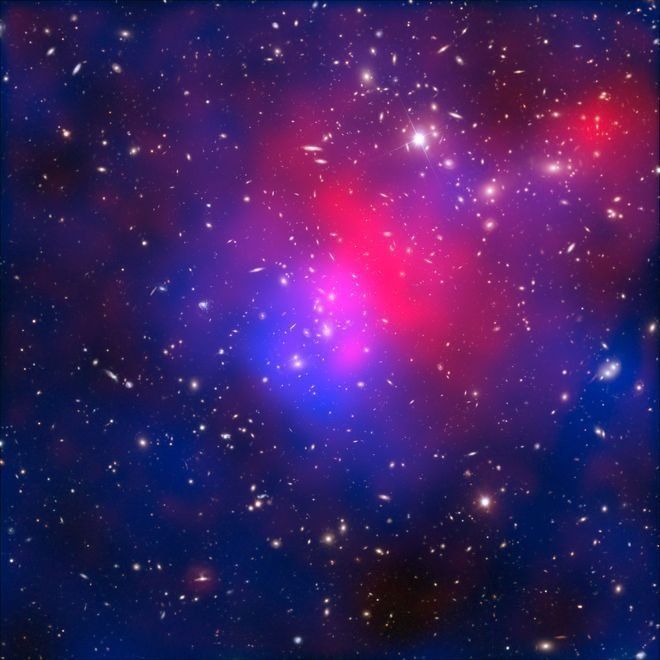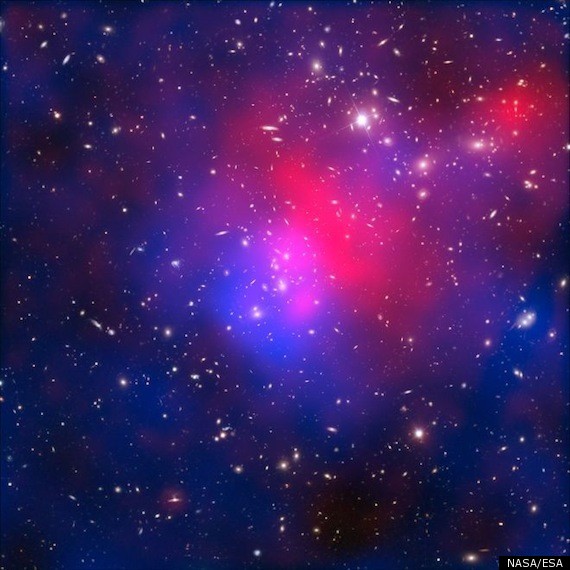
An image from super-cluster Abell 2744 shows the aftermath of a collision between four smaller galaxy clusters. The resulting mess is called Pandora’s Cluster.
WIRED reports that astronomers were able to map out the locations of three different kinds of matter in the system, and that could provide more information on how dark matter behaves when it crashes into ordinary matter.
The crash took place roughly 350 million years ago, according to Astronomy Now.
“It’s likely that the four merging galaxy clusters were completely separate entities before this merger,” said Julian Merten, one of the lead scientists of the study at the Institute of Theoretical Astrophysics of the University of Heidelberg. “We believe that they are merging together to form a single, massive galaxy cluster.”
Pandora's Cluster is as big as 1.8 quadrillion suns and hosts trillions of stars.
To make this map, the most detailed to date, astronomers used new data from the Hubble Space Telescope and the Very Large Telescope in Chile. They used pre-existing data from NASA’s Chandra X-ray Observatory to locate the hot gas in the cluster.
Only about 5 percent of the giant cluster is made up of galaxies that glow in visible light. "The rest of the mass," writes WIRED, "is gas (20 percent, shown [below] in pink) that’s so hot it’s only observable through the X-rays it emits, and dark matter (75 percent, blue), which is utterly invisible.
Scientists were able to indirectly observe the dark matter, based on how it affected surrounding bodies. Physorg explains how this is possible:
Dark matter is particularly elusive as it does not emit, absorb or reflect light (hence its name), but only makes itself apparent through its gravitational attraction. To pinpoint the location of this mysterious substance the team exploited a phenomenon known as gravitational lensing. This is the bending of light rays from distant galaxies as they pass through the gravitational fields present in the cluster. The result is a series of telltale distortions in the images of galaxies in the background of the VLT and Hubble observations. By carefully plotting the way that these images are distorted, it is possible to map quite accurately where the hidden mass — and hence the dark matter — actually lies.
Take a look at NASA's image of the smash-up [below], and visit Physorg to see an animation of the cluster's formation.
LOOK: